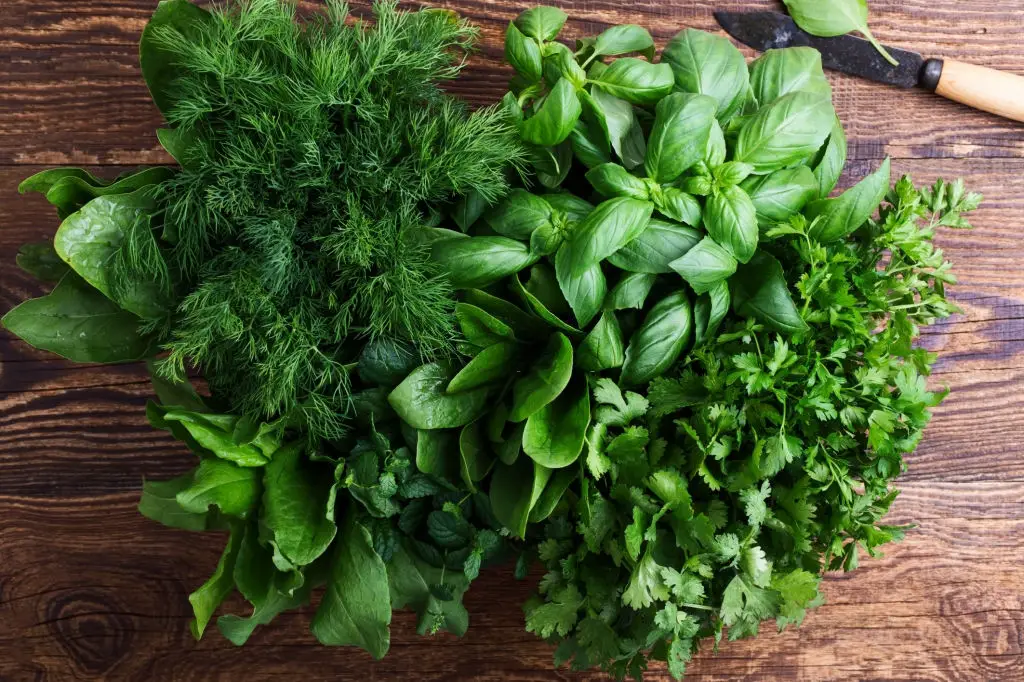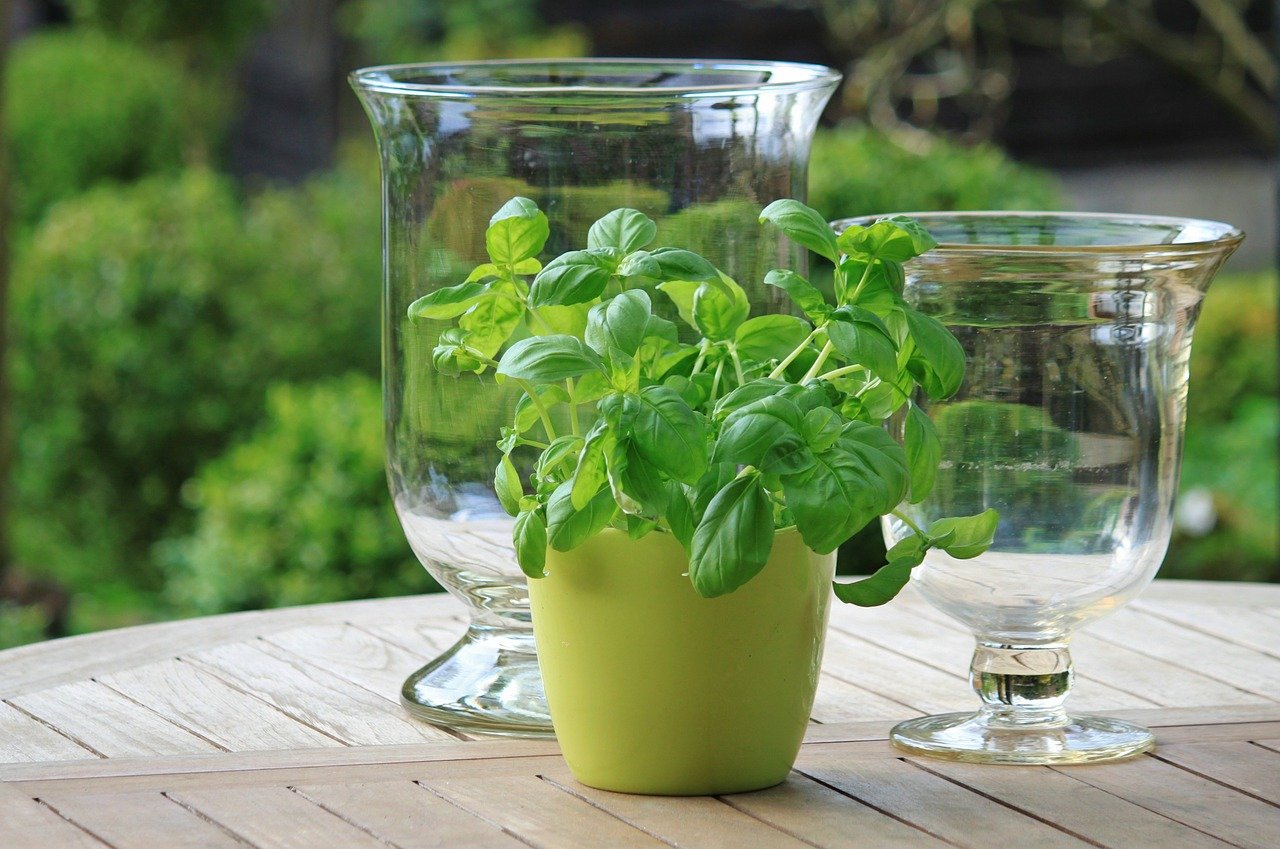How to care for a basil plant? Fresh basil is an integral part of the Mediterranean diet. Besides being delicious, basil has potent antimicrobial and anti-inflammatory properties. Basil is also packed with nutrients like vitamins, minerals, flavonoids, and essential fatty acids. Additionally, several studies show that basil exhibits anti-aging effects, which may play a role in the outstanding longevity of Mediterranean blue zone residents.
Basil is a versatile herb. You can add it to salads, Asian dishes, bruschetta, and a limitless number of mouth-watering recipes. And, who can refuse fragrant pesto pasta on a summer afternoon?
The best way to enjoy fresh basil is to grow it yourself. Fortunately, growing basil is easy if you follow a few simple tips. Keep reading to learn how to care for a basil plant.
What is Basil?
Basil is a culinary herb whose scientific name is Ocimum basilicum. Basil belongs to the mint family, and there are several different types of basil plants, including:
- Sweet basil, also called Holy Basil, is the most common variety.
- Purple basil gets its color from antioxidant-rich anthocyanins.
- Lemon basil has citrus notes.
- Thai basil has an unmistakable anise flavor.
- Cinnamon basil offers a touch of spice to any dish.
Depending on the subspecies, basil plants produce pink, purple, or white flowers that bees and hummingbirds love.
Preferred Climate for Basil
Originally from the South Pacific and southern Asia, basil plants thrive in warm weather. Basil requires at least 6-8 hours of full sun every day. If you have a shady yard, you’ll want to plant your basil in lightweight fabric pots so that you can move them around to follow the sun.
How To Care For Basil Plant: Basil Soil and Nutrient Needs
Like most herbs, basil plants require rich but well-drained soils. They work great in containers and raised beds that provide better drainage. However, basil likes consistent water levels, and you’ll need to use mulch to maintain moisture in warmer climates.

The plants like a neutral to slightly acidic pH around 6.0 to 7.5. Basil tolerates nutrient-poor soil but appreciates occasional organic fertilizer in the form of compost tea.
Basil plants easily absorb toxins in the environment, and they should be kept away from car exhaust as much as possible. You’ll need to plant them away from garages and busy streets.
Starting Basil Plants
You’ll maximize your basil harvest by getting the plants through the seedling stage indoors. Most gardeners sow basil seeds indoors six weeks before the last frost of spring. You can start basil even earlier in the season if you nurture your seedlings under full-spectrum fluorescent bulbs. When basil plants reach about 12-24 inches, they’re ready to move into the garden.

If you’re planning to transplant your basil plants in garden beds, you’ll have to wait until the soil reaches around 60-70 F. You’ll want to give your basil plants plenty of room by planting them at least 10-12 inches apart. In subtropical areas where there is a longer warm season, basil plants can grow into small bushes. If you live in these warmer places, you’ll need to give your plants even more room to allow them to fully develop.
If nighttime temperatures drop below 50 degrees, you’ll need to protect your young plants. You can move containers indoors and protect plants in garden beds with a cloche or dropcloth. Placing a thick layer of mulch around your basil plants will also protect them from sudden frost.
Pruning Basil Plants
Basil plants respond well to pruning and recover quickly. The way you prune basil will depend on your purposes for growing it. If you’re looking for optimum flavor for culinary purposes, you’ll have to pinch off any flower buds the moment they appear. Once basil flowers, the stems turn woody, and the leaves become faded and less flavorful.
However, there are reasons to let at least some of your basil plants flower. Basil makes an excellent companion plant, especially for tomatoes. Basil plants left to flower serve the dual purpose of attracting pollinators and luring pests away from your tomato plants.
Some gardeners start by picking off flowers for several weeks before harvesting a portion of the leaves for cooking. Then, they let the plants flower later in the season to help pollinate the tomatoes. Even though tomatoes are self-pollinating, they appreciate a little help from our insect friends.
Regardless of whether you plan to keep the flowers or not, you’ll want to start pruning basil early to encourage your plants to become lush and bushy. Once your basil seedlings have three pairs of leaves, cut them so that only one pair remains. Every time a branch reaches six or eight leaves, prune it down to two. When your plants are around six weeks old, remove the central branch to promote further lateral growth.
Pest Control for Basil Plants
Basil plants are particularly susceptible to aphids, powdery mildew, and grasshoppers. Gardeners should manage these pests through organic methods, as pesticides readily absorb into basil plants, leaving harmful chemical residue.
One of the best ways to discourage fungus, pests, and other diseases from settling into the leaves is to avoid splashing your basil plants when you water them. Basil leaves are tender, which makes it easier for pathogens to penetrate them. If you notice any affected leaves, cut them off and destroy them to prevent the disease from spreading.
Grasshoppers love basil and can destroy your plants in a flash if you’re not careful. You can keep a grasshopper problem under control by eliminating weeds, hanging birdfeeders, and spraying the plants with garlic oil. Another alternative is raising chickens and ducks who enjoy snacking on them.
Harvesting Basil
You can harvest basil as needed because basil is so receptive to pruning. Harvesting in the morning will give you juicier and tastier leaves to use in your favorite recipes.
There are several ways to store harvested basil, but the best way to preserve their delicate flavor is to freeze them in plastic sandwich bags. Alternatively, you can store them in olive oil in cold-resistant glass jars in the freezer. Basil also makes a tasty choice for making butter or oil extractions. You can even make pesto in bulk and freeze it in single-meal portions in glass or plastic containers.
Additionally, you can dry basil and store the dried herbs in a cool, dark place. However, you will lose much of the flavor when you dry basil, and many recipes won’t taste the same with the dried version.
Growing Basil Highlights:
| Climate | Warm |
| Soil | Rich, well-drained |
| Spacing | 10-12” apart |
| Seed depth | ¼” |
| pH | neutral to slightly acidic |
| Watering | Consistent moisture, avoid splashing |


